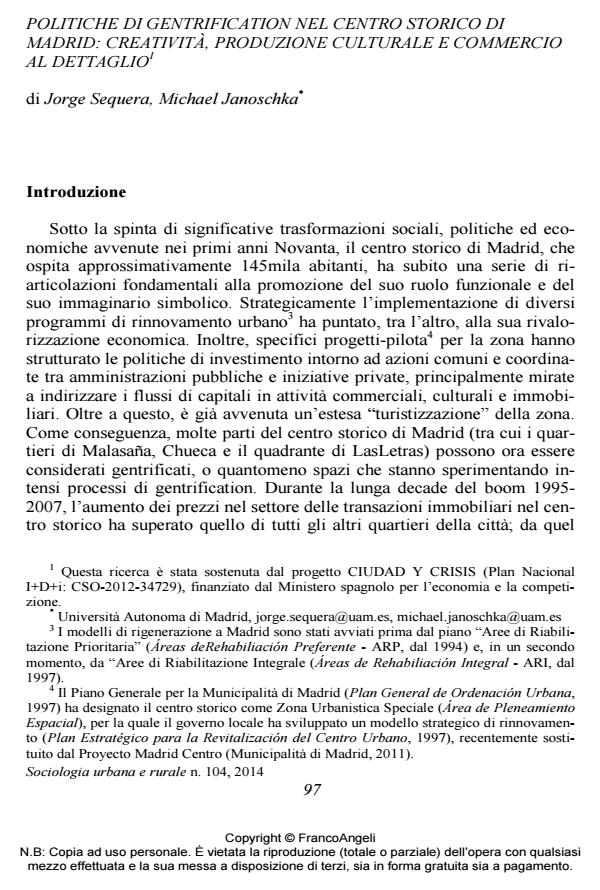The Politics of Gentrification in the Historic Centre of Madrid: Creativity, Cultural Production and Retail
Journal title SOCIOLOGIA URBANA E RURALE
Author/s Jorge Sequera, Michael Janoschka
Publishing Year 2014 Issue 2014/104
Language Italian Pages 14 P. 97-110 File size 237 KB
DOI 10.3280/SUR2014-104007
DOI is like a bar code for intellectual property: to have more infomation
click here
Below, you can see the article first page
If you want to buy this article in PDF format, you can do it, following the instructions to buy download credits

FrancoAngeli is member of Publishers International Linking Association, Inc (PILA), a not-for-profit association which run the CrossRef service enabling links to and from online scholarly content.
The application of selective public policies and strategic public-private-partnerships has deeply transformed the social composition of the historic city centre of Madrid. By focusing upon creativity, cultural production and retail as key factors to attract new lifestyles, the city centre was converted into a highly merchandised and segregated space. Based on two case studies, this article analyses the politics of gentrification applied in Madrid for the last two decades.
Keywords: Gentrification, Creativity, Retail, Madrid, Lavapiés, Triball.
Jorge Sequera, Michael Janoschka, Politiche di gentrification nel centro storico di Madrid: creatività, produzione culturale e commercio al dettaglio in "SOCIOLOGIA URBANA E RURALE" 104/2014, pp 97-110, DOI: 10.3280/SUR2014-104007